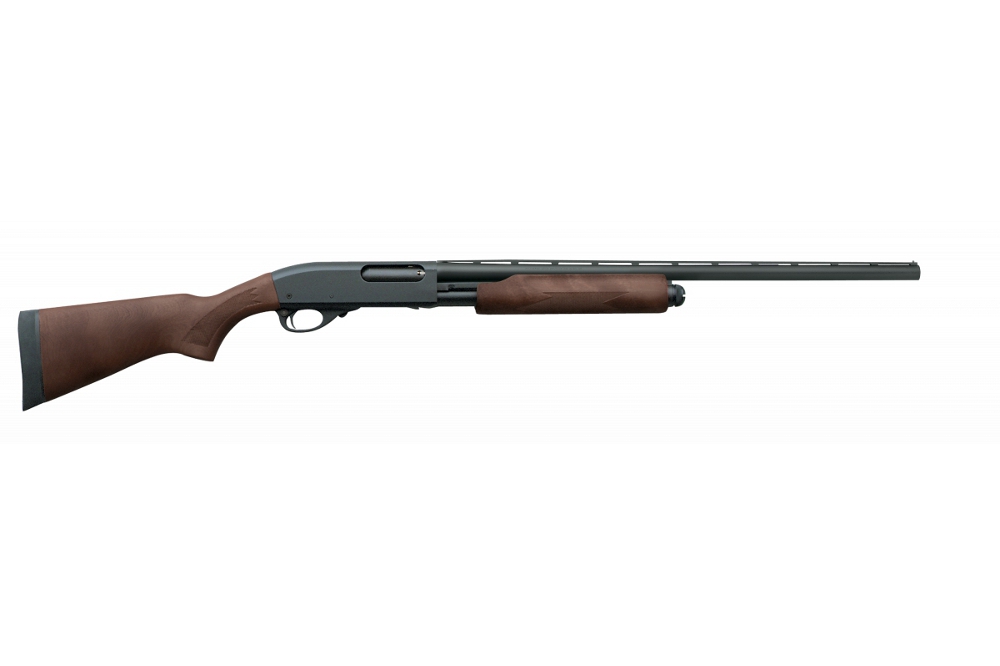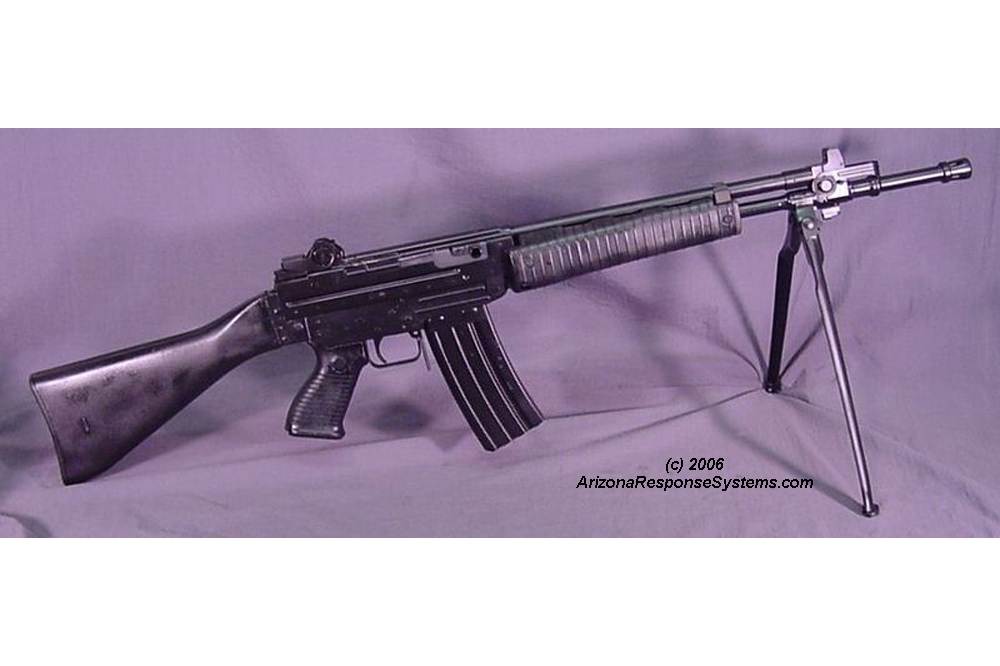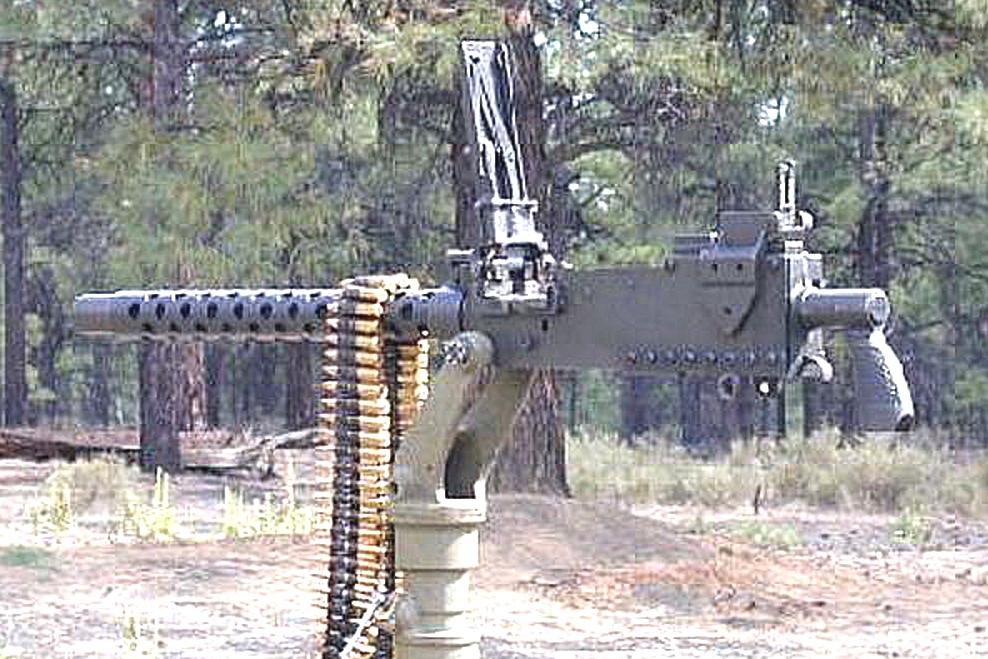
Misc. Review: The Remington 870 20g for Home Defense
One thing that does come up from time to time in the discussion is penetration, and a desire for minimal penetration. I submit that the shotgun has a lot more penetration in dry wall structures than many would hope, but I’ll float that idea for a while.
Within the context of a home-defense weapon, particularly in the hands of a youth or small statured person (not exclusively women), the 20g is simply much more pleasant to shoot. And the more one shoots, the more confident one becomes with it.
I got girl-child a .410 Remington pump when she was around 8, and had her shooting clays set on the ground. That lasted all of a day. At the end of the day, she was shooting gently thrown clays out of the air with the 20g and the .410 got traded for another 20g. As girl-child got better, I bought for her a very nice Beretta over under, but she preferred the 20g. I even got her an 1100 in 20g, which has distinctly less recoil than the pump, but she stills prefers the pump. Why?
“Shick-Shick”! Dad, that sound is just so cool! Allllrighty then, that reason is as good as any other. Neither of us is really good at clays, but it is really fun, and she can usually get 16-18 out of 25, while I’m struggling to do as well. The point is, we can shoot 200+ rounds of bird shot in an afternoon without it hurting. 12 gauge is much less pleasant.
A note here – the old (pre ’84?) 20g Remington was a 12gauge frame with a barrel tapering down to 20g. Later models are what they sometimes call the Light Weight 20, and is on its own dedicated, smaller frame.
The 20g comes in two lengths. A 21″ choked barrel with vent rib and a 26″ (?) vent rib. This left me with a little bit of a quandary. Sure, I could buy an after-market barrel for it, but with the shotguns selling for around $250 used, paying $150 for a barrel seemed pointless. For a little more I could have a second shotgun. The 21″ barrel is interesting. I really like it. It is longer than I prefer for a tactical shotgun, and not as long as I like for shooting clays, but it is a pretty good compromise, especially with the Rem Choke. A 3 rd Choate extension fits the 21″ just fine. Choate is the only one I found making a 2 and 3 round extension. I don’t really like the Choate, because of the plastic end plug. It also isn’t of the same quality as the Wilson/Scattergun. But I am only finding a Vang 1 rd extension, which would work on a 14″ SBS, but that’s about it.
Anyway, Remington’s newest forearm comes all the way back to the trigger guard and precludes the use of a 4 round Side Saddle. Speedfeed makes a stock and fore end in camo and black, but I’m having trouble finding it anywhere in 20g (Midway and Brownells do not have). I may end up laminating/modifying with epoxy some wood handguards as I did back in the day before synthetics.
Trijicon sells the Scattergun front and rear for less than Wilson, but they are made for the 12g. Kissing the underside of the front sight with a 3/4″ end mill will change the contour to that of a 20g barrel. The rear is good as-is. I cut the barrel at 18-1/8″ and notched the front sight to .300 to slide around the rib pedestal. I prefer to solder the fronts – but can’t do that with tritium tubes. I’m going to see if either Wilson or Trijicon will sell them without tritium. The 3M epoxy they use hasn’t failed me in hundreds of uses, but I did discover that the expiration date on the package is important – several packages from 2006 were unserviceable.
I swaged the stupid dents out of the tube that Remington puts there to prevent the use of an extended tube, and used an oversize safety of (I don’t recall) manufacturer. I have used the round-head Vang unit in the past, but have evolved my tastes a bit – it is too oversize. I prefer the ones I have that use only a slightly oversize head.
Brownells aluminum follower. I got “orange” but if I do it again I will get red, as the orange anodizing is more bronze and not as visible as the red. It does have a nice nipple on it (shut up Shlomo) which makes feeling for an empty tube easy.
I’ll probably get some slightly longer springs from Wolf, as I am not confident using the original 4 round spring with 6. Probably fine with 5.
So this was a proof-of-concept project. Is the time and effort to make it 18″ worth it, over keeping the factory 21? For most people, I’d say no. But I don’t have to pay myself for the labor and had a lot of the stuff in inventory anyway.
Back to the 20g as a home-defense. What’s the longest distance for inside the house? 30 feet maybe? I believe #4. Buck at 30 feet will be quite lethal, and modest in recoil. A 2 or three round extension gives one 7-8 rounds. Illumination is still an issue. As is the Hollywood myth that a shotgun magically kills anything in the room. You do have to aim. I will have to print the cylinder bore, but I suspect a spread of only 6″ max. I would not be surprised to see the shot cup make a hole in a paper target at these indoor distances.
Oh – so many things I’m pondering on this. I will eventually buy the reamers to install RemChoke on 18″ barrels. Now it is just Cylinder Bore. But it would take a dedicated shooter to pay for the labor.
I’m also looking at the Ashley Express sights – they have a rear peep with a short rail that might be good for a micro red dot, But I hate their front sight.
Conclusion: for those favoring a shotgun for home defense, and anticipate it may be used by someone intimidated by the 12g, the 20g has a lot going for it. It is economical, mild recoil, lightweight, and within the narrow parameters of an inside-the-house weapon, I think it is ideal.
Started at 75 feet with slugs just to zero the track-lock sights.
75 feet 7/20
30 feet 18/20
20 feet 19/20
Conclusion – cylinder bore 20 g #3 buck will put a world of hurt on anyone in the house. Past 25 yards, not so much.
Will test again next time with the choked 21″
I beginning think that the whole buckshot thing for indoors is overkill.
There is a relationship between cross section and penetration that differs from kenetic energy. If you consider the entire 7/8 oz payload as the determinant of kenetic energy, I wonder if a smaller pellet would penetrate an elastic media more so than a larger cross-section.
There is a relationship between cross section and penetration that differs from kenetic energy. If you consider the entire 7/8 oz payload as the determinant of kenetic energy, I wonder if a smaller pellet would penetrate an elastic media more so than a larger cross-section. Please! save the bird shot for birds. At 15 feet, 20g bird shot will penetrate a layer of denim and produce a nasty shallow wound of about 3″ penetration in flesh. It comes no where near the 12″ FBI recommended 12″ minimum. and is not a man stopper. Same with 12g bird shot. No LE agency or military unit uses bird shot for stopping bad guys because penetration stops bad guys, not kinetic energy. The 20g #3 buck will penetrate 12″, (barely). It’s in no way over kill for in the home defense.
The man at this link is highly respected for his findings. Check his 20g test for the “truth.” http://www.theboxotruth.com/docs/bot22.htm
He posts as Old_Painless in this thread. http://www.ar15.com/forums/t_1_5/147…e_.html&page=1
Bottom line, no bird shot load meets the FBI minimum penetration in ballistic gelatin. Can #7 birdshot kill you? Yes, in a small percentage of shootings. So can a .25 ACP. Neither is the best, most consistently reliable choice for a defensive load for immediately stopping a threat.
I received a note from a police officer that asked me not to mention names or locations about this true event.
Which is a fancy way of saying it is a completely fabricated bullshit story. Cop killed makes the newspaper, it’s not a double-secret probation.
Test was ok, for penetration – despite not testing like items. But I think the guy missed the point – nobody is disputing that 12g packs more punch than 20. The question is, is 20g sufficient for inside the house. His own testing proved it so.
In the context of this 20 gauge idea, I’m not sure how “less-ineffective” can be construed as a positive. Your musings suggest that you believe it is easier for novice to hit a close target with a one-handed grip on a .38 revolver, than with a 2-handed grip on a 20g shotgun. If this is your belief, it contradicts a hundred years of firearms training. Long guns have always been easier to train than handguns. Originally Posted by gunplumber View Post I received a note from a police officer that asked me not to mention names or locations about this true event.
Which is a fancy way of saying it is a completely fabricated bullshit story. Cop killed makes the newspaper, it’s not a double-secret probation.
There’s a ton of Google images of birdshot in gel out there too. Add a shirt and coat, a breastbone or ribs, and the penetration would be even less likely to hit vitals and quickly stop an intruder.
From the Box 0′ Truth Lessons learned: 1. As we have shown time and time again, birdshot is for little birds, not for bad guys. It makes a nasty, shallow wound, but is not a good “Stopper”.
2. I was surprised by the penetration of the #3 Buckshot in the 20 gauge. It performed much better than I would have expected. I would not be too quick to discount Buckshot in a 20 Gauge for home defense. Quote: Originally Posted by Powderfinger View Post The 20g. #3 buck in your girl-child’s shotgun will do the job. 20 Ga bird shot that penetrates only one gallon jug of water covered with 2 layers of cloth at 15′ was a real world test that convinces me it lacks 12″ penetation. Even the 12 Ga. bird shot failed, but that’s an aside. I was mainly addressing your belief that 20 ga #3 buck was over kill and bird shot could be sufficient for home defense for a child’s weapon. It is not a belief, it was a hypothesis for further testing, evaluating mass and velocity at ranges where the “payload” is still relatively dense.
I also said I was mainly addressing your thought that 3 buck was over kill and that 20 ga bird shot may be adequate. Any co-mingling of tests didn’t affect what I specifically tried to address; your thoughts on the adequecy or 20 ga birdshot vs. buckshot for your daughter’s home defense weapon.
My first goal is to determine spread at distance with a cylinder bore 18″. If spread is too great, then that suggests one needs either to keep the 21″ with choke, or choose a different size shot.
I really don’t care what 12g does. I don’t own any, although I have about a dozen 20g right now. I’ve never disputed that 12g is more lethal than 20g. My goal is to determine the optimal set up for a Rem 870 20g youth for home defense – to see how much is enough.
I think I may duplicate his setup with the water jugs. I’d like to see the correlation between distance and penetration – my suspicion is that it will be something like 2x the distance = 1/4 of the penetration.
I am also pondering the terminal effect of a given mass at a given velocity, at a distance where the mass has not dissipated. That is, at point blank range, compare 1 oz of lead at 1000 fps (slug) to to 1 oz of lead (#3 buck) at 1000 fps, to 1 oz of lead (#7 shot) at 1000 fps.
It’s all good – I have no pre-made conclusions to justify. Are you talking about no. 6 bird for defense?
The military used to test cartridges on hogs to see if they would work. Maybe they still do, but don’t say anything about it to the public.
I saw video of turkey hunter who didn’t shoot any turkeys but ended up shooting a hog. I think he was using #6 bird and I think a turkey shotgun has a full choke. He killed the hog but it ran a little ways.



Leave a Reply
You must be logged in to post a comment.